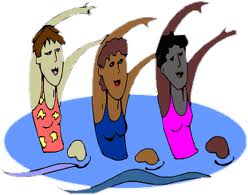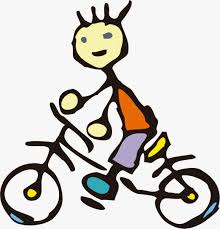I have blogged in the past about motivators and touched on a physical fitness course I took in my final semester at Iowa State University. This was the spring of 1995. In the course, we focused on conditioning and exercise techniques through personal fitness.
The course taught me a lot, especially to be humble, to not worry about how you look, and to work your hardest. This is all in consideration that I was the oldest in the class, had to pump the milk out before I did anything, and certainly had the most outdated exercise clothing. But I was not the slowest or the weakest!
Looks just like me back then; even today!
I work with people who are either released to work [following an injury] or are still striving for maximum medical improvement. I know it’s hard to be patient [and a patient] during the recovery process following an injury. It may seem as though your body will never be the same…..but it will, trust me, if you work your hardest. In fact, your body can become stronger and better than before an injury.
The role of exercise and conditioning is incredibly beneficial when healing your body from an injury. It is important to do what it takes to reach the goal MMI. A vocational rehabilitation program needs to incorporate a well-balanced exercise plan for the patient. In fact, the healing benefits of exercise are well-known and should never be overlooked. Following is a list of benefits of exercising (I’ve had this list for awhile and do not have the original source!), please…..read on!
1. Exercise increases the blood flow to the injury, which increases oxygen flow to promote healing. It also sweeps some debris away from the injury site and brings in immune-system cells to clean up the rest.

2. Exercise keeps neighboring joints limber. Another healing benefit of exercise is that it keeps an injured joint or the joints surrounding a sprain or fracture moving, which prevents the body from creating excessive scar tissue. Scar tissue can anchor a joint in place, causing permanent stiffness. Exercising to keep joints limber and scar tissue at a minimum is especially useful after a marathon or other high-intensity exercise.

3. Exercise prevents muscle atrophy. When we injure a joint or limb, we tend to avoid using it until it’s “healed,” but keeping the muscles surrounding the injury in shape are as important to the healing process as setting a bone or reducing swelling. Keeping the surrounding muscles in shape can also eliminate the need for a brace or splint.
4. Exercise can also help wide variety of chronic conditions. Exercise can help prevent chronic conditions like heart disease and diabetes and can also help keep these conditions from getting worse. A good exercise program for a chronic condition will include cardiovascular exercise to strengthen the heart and strength training to increase endurance. Benefits of exercise, both cardiovascular and strength-building, include burning fat, which alleviates unnecessary strain on the bones, muscles, and joints.
5. Regular cardiovascular exercise strengthens the heart. A benefit of exercising the heart is protecting it against heart attacks and other complications. Overall, however, those who get regular cardiovascular exercise have a lower resting heart rate, which helps prevent damage to the blood vessels by allowing the blood to move more freely through the system. Both cardiovascular exercise and strength training improve circulation in all parts of the body, decreasing the risk of heart attack, stroke, and even impotence. Exercise also improves balance and coordination, which are crucial to preventing a fall and the injuries a fall can cause.
The healing benefits of exercise inspire the body to heal itself more quickly and stay in the game for another round. Even gentle exercise (walking, yoga…more on in a future post….) while recovering from an injury or illness can speed up healing and bring you back stronger than before.
Of course, it’s always recommended to talk to your doctor before starting any exercise program. It’s great to team up with people who also want to exercise….and you’ll find additional benefit through having new friends!
My role as a health educator allows me to help you and your clients (mine too) in many ways. Contact me for more information! Also, if you need a life care plan for your client, I will likely include some sort of exercise plan and the costs (if any), of such to help your client continue rehabilitation efforts. Oh, yoga, is a personal favorite and I couldn’t exercise without including yoga!
___________________
My professional rehabilitation counseling practice is focused on helping people participate in the world around them, particularly in their own world of work.
* Vocational Resources Plus, LLC * lcpresourcesplus.com *
VocResourcesPlus@msn.com
1 comment